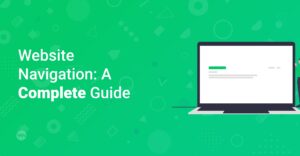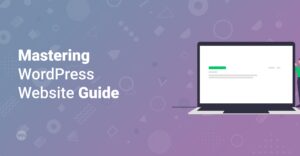Preface
Are you ready to take your Elementor skills to the next level? Creating stunning, multi-section layouts doesn’t have to be a daunting task. This guide will equip you with advanced strategies to build visually appealing and highly functional web pages using Elementor. Whether you’re a beginner or an experienced designer, you’ll find actionable tips and techniques to enhance your website design workflow.
Understanding Multi-Section Layouts
Multi-section layouts are web pages composed of distinct content blocks arranged to guide the user through a narrative or showcase different aspects of a product or service. These layouts are crucial for modern web design, offering numerous benefits:
- Improved User Experience: Clear content separation enhances readability and navigation.
- Enhanced Visual Appeal: Properly structured sections create a visually engaging design.
- Better Content Organization: Segmenting content makes it easier for users to find relevant information.
- Increased Engagement: Dynamic layouts can capture and maintain user attention.
Hint: Before diving in, ensure you have Elementor installed and activated on your WordPress site. If you need assistance, check out this guide on how to install WordPress plugins.
Planning Your Layout
Effective multi-section layouts begin with careful planning. Here’s how to approach it:
1. Define Your Goal
Start by identifying the primary objective of the page. What do you want your visitors to do? Is it to sign up for a newsletter, explore a product, or contact you? Defining your goal will help you prioritize content and design elements.
2. Content Outline
Create a detailed outline of the content you want to include in each section. This ensures a logical flow and prevents content overload. Consider breaking down your content into the following:
- Headline: A compelling title that grabs attention.
- Introduction: A brief overview of the section’s content.
- Main Body: Detailed information, supporting arguments, and visuals.
- Call to Action (CTA): Clear instructions on what you want the user to do next.
3. Wireframing
Sketch out a basic wireframe of your layout. This doesn’t need to be pixel-perfect; it’s simply a visual representation of how your content will be structured. Use tools like Balsamiq or even pen and paper to map out your sections. Here are some common section types to consider:
- Hero Section: The first section visitors see, designed to make a strong initial impression.
- Feature Sections: Highlighting key features or benefits of your product or service.
- Testimonial Section: Showcasing positive reviews and social proof.
- Call-to-Action Section: A prominent area for converting visitors into leads or customers.
- Footer: Containing essential information, such as contact details and social media links.
Implementing Multi-Section Layouts with Elementor
Now that you have a solid plan, let’s dive into the practical steps of creating a multi-section layout using Elementor. I recommend using Astra Pro with Elementor, because it gives you the ultimate flexibility and options to customize your designs.
1. Setting Up Your Page
- Create a New Page: In your WordPress dashboard, go to Pages > Add New. Give your page a descriptive title.
- Edit with Elementor: Click the “Edit with Elementor” button to launch the Elementor editor.
- Page Layout: In the Elementor settings (lower-left corner), set the page layout to “Elementor Full Width” or “Elementor Canvas” for a clean slate.
2. Adding Sections
Add New Section: Click the plus icon (+) to add a new section. Choose a structure that suits your content—single column, two columns, three columns, etc.
Adjust Section Settings: Customize the section’s layout, style, and advanced settings.
- Layout: Set the width (boxed or full width), column gap, height, and vertical alignment.
- Style: Add background colors, images, gradients, or videos. Adjust borders, shapes, and typography.
- Advanced: Control margins, padding, motion effects, and custom CSS.
/* Example: Adding a gradient background */
.elementor-section {
background: linear-gradient(to right, #4a90e2, #63b8ff);
}
3. Populating Sections with Content
Drag and drop widgets from the Elementor panel into your sections. Here are some essential widgets for creating compelling layouts:
- Heading: For titles and subheadings.
- Text Editor: For body text and descriptions.
- Image: For adding visual elements.
- Button: For calls to action.
- Video: For embedding videos.
- Spacer: For adding vertical or horizontal spacing.
- Divider: For creating visual separation.
4. Styling Your Sections
Elementor provides extensive styling options for each widget and section. Here are some best practices:
Typography: Use consistent fonts and sizes to maintain visual harmony. Consider using Google Fonts for a wide range of options. More information on that can be found here: Top 10 Free & Best Google Fonts For Your Website
Colors: Choose a color palette that complements your brand. Use contrasting colors for text and background to ensure readability.
Spacing: Proper spacing is crucial for readability. Use margins and padding to create balanced layouts.
/* Example: Adding padding to a section */ .elementor-section { padding: 50px 0; }Backgrounds: Use high-quality images or videos to enhance visual appeal. Optimize images for web to improve page load times. Another great post for the topic can be found here: How To Quickly Make High-Resolution Screenshots in Base 64
5. Advanced Techniques
Using Columns: Create complex layouts by nesting columns within sections. Adjust column widths to create unique content arrangements.
Overlapping Elements: Use negative margins and z-index to create overlapping effects. This can add depth and visual interest to your designs.
/* Example: Overlapping elements */ .elementor-widget-wrap { margin-top: -50px; z-index: 10; }Motion Effects: Add subtle animations and scrolling effects to make your page more dynamic. Use these sparingly to avoid distracting users.
Custom CSS: For advanced customization, use Elementor’s custom CSS option to add your own styles.
6. Ensuring Responsiveness
With the increasing number of mobile users, ensuring your layout is responsive is crucial. Elementor provides responsive settings for each widget and section.
- Mobile Editing: Switch to mobile view in the Elementor editor and adjust settings as needed.
- Font Sizes: Reduce font sizes for smaller screens to improve readability.
- Column Order: Adjust column order to ensure content flows logically on mobile devices.
- Hiding Elements: Hide unnecessary elements on mobile to simplify the layout.
Best Practices
- Keep it Simple: Avoid overwhelming users with too much information or visual clutter.
- Use White Space: White space (negative space) improves readability and allows elements to breathe.
- Maintain Consistency: Use consistent styles and layouts throughout your page to create a cohesive design.
- Optimize for Speed: Optimize images, minimize CSS and JavaScript, and use a caching plugin to improve page load times.
Info: A fast-loading website is essential for user experience and SEO. Use tools like Google PageSpeed Insights to identify and fix performance issues.
Examples of Effective Multi-Section Layouts
Here are some examples of multi-section layouts you can create with Elementor:
- Landing Page: Hero section, feature sections, testimonial section, call-to-action section, and footer.
- About Us Page: Introduction section, team member profiles, company history, mission statement, and contact section.
- Service Page: Overview section, service details, pricing plans, customer testimonials, and contact form.
Additional Resources
- Elementor Documentation: Elementor Help Center – Comprehensive documentation and tutorials for Elementor.
- WordPress SEO Guide: For extra search engine love, refer to this article: How to Optimize Your Website for SEO: A Quickstart Guide for WordPress
Conclusion
Creating multi-section layouts with Elementor is a powerful way to enhance your website’s design and user experience. By following the strategies and best practices outlined in this guide, you can build visually appealing, highly functional pages that engage your audience and drive conversions. So, start experimenting with different layouts and design elements to create a website that truly stands out!



